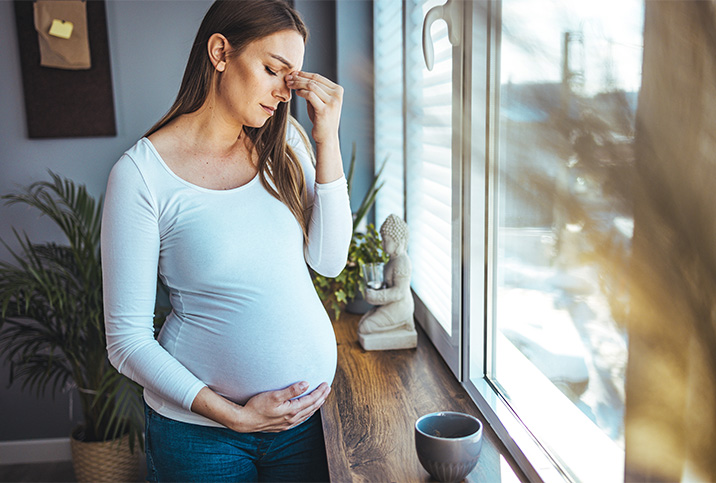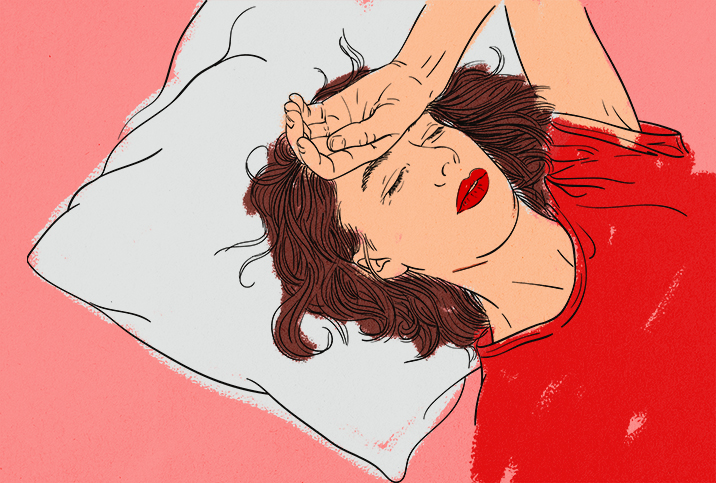How to Diagnose and Treat a Migraine Disorder

Migraine disorder is a debilitating neurological disease that affects how the brain processes pain, and it's a lot more common than you may think. Migraine disorder affects about 15 percent of the population—about 20 percent of women and 10 percent of men suffer migraine episodes—and is considered the second-most disabling condition globally.
Migraines can have an adverse impact on everything from your psychological health to physical health and financial stability. Suffering from debilitating migraines can get in the way of your sexual health.
However, in a research study published in 2013 surveying 1,000 patients who experienced migraines, 34 percent were familiar with having sex during a migraine and 60 percent of these people reported an improvement in their migraine attack.
There is a theory that sexual activity simply provides enough distraction to relax someone from the symptoms of a migraine. There is speculation that endorphins released during sex and orgasm may help relieve the pain of a migraine. However, since sex requires physical involvement, a migraine may be exacerbated by pressure on the back and neck. Additionally, there's an increase in blood pressure that can trigger symptoms.
People with migraines often assume they're experiencing a different headache entirely. One study, for example, indicated that 88 percent of people who think they have a sinus headache actually have a migraine.
How can you determine which headache disorder you're experiencing so you can get the treatment you need?
Diagnosing a migraine disorder
The simplest tool to diagnose migraine is the ID Migraine tool, explained Lauren R. Natbony, M.D., medical director of Integrative Headache Medicine of New York and an assistant professor of neurology at the Icahn School of Medicine at Mount Sinai. To use the tool, all you have to do is answer a series of three questions. Answering "yes" to two out of these three questions typically means you're experiencing a migraine:
- Has a headache limited your activities for a day or more in the past three months?
- Are you nauseated or sick to your stomach when you have a headache?
- Does light bother you when you have a headache?
Other criteria used by doctors to discover if you're suffering from migraine disorder are its status as an episodic disorder (meaning it's not caused by something else) and its frequency, noted Susan Broner, M.D., assistant professor of clinical neurology at Weill Cornell Medical College in New York City and medical director of the Weill Cornell Medicine Headache Program.
If a person has had at least five episodes of attacks in their life lasting four to 72 hours—accompanied by at least two out of four pain characteristics—they likely have migraine disorder. Those pain characteristics are:
- One-sided headache
- Throbbing
- Moderate to severe intensity
- Gets worse with activity
Despite how obvious these symptoms may seem, the disorder remains underdiagnosed, according to Broner. Part of the reason, as mentioned above, has to do with how often episodes are mistaken for other types of headaches, and part of it is due to how migraine disorder has been historically stigmatized because it affects more women than men, leading to a dearth of research on the condition.
Migraine disorder has long been perceived as a psychiatric disorder, an invisible illness that leads folks to feel they have to grin and bear this often debilitating pain.
When should you seek help?
"There are all sorts of reasons why people do or don't seek help," Broner said. "Until it interferes with one's life or becomes frequent, many try to get by with over-the-counter medications. And some can get by. There is a drive to just get through the day, knowing that the pain will eventually stop. But many people don't get benefits from these meds. Many people with migraine don't get diagnosed and don't know about all the treatment options available to them and, therefore, endure significant disability."
Some people lose weeks of their life every year to the condition. Migraine's impact could be greatly reduced if people sought proper treatment.
"A primary care physician is a good first step in migraine evaluation and treatment," Natbony said.
She explained, however, that if migraine attacks occur frequently and don't respond to commonly prescribed medications, seeing a neurologist or a headache specialist is the next best step.
She recommended patients show up to their medical appointment with a detailed history of their migraine attacks, including frequency, duration and characteristics.
Getting treated
Treatment of migraine disorder generally requires a two-pronged approach involving lifestyle changes and medication.
Medications
Research indicates a migraine is a brain stem-driven disorder, which is why triptan medications are effective. Triptans are a family of tryptamine-based drugs, first commercially available in the 1990s, used as abortive medication in the treatment of migraines and cluster headaches.
Triptans block pain pathways in the brain and can be taken as pills, shots or nasal sprays. For some people, these meds can stop a migraine attack in its tracks within two hours, Broner said. The caveat is that triptans can also cause side effects, such as tightness in the jaw, throat and chest, tingling in the fingertips and fatigue. There had been speculation that people who use triptans could be at risk of a stroke or heart attack, but further research indicated these fears were unfounded.
Gepants and ditans, developed more recently to treat migraines, can prove effective.
Gepants are CGRP receptor antagonists. A CGRP (calcitonin gene-related peptide) is a protein released near the brain that can cause intense inflammation and, sometimes, a migraine episode, prolonging the attack. Gepants bind to the CGRP receptor, blocking its impact. Gepants seem to have fewer side effects than triptans, though clinical trials have indicated the possibility of fatigue and nausea.
Ditans, meanwhile, work in a similar way to triptans but seem to have fewer side effects, aside from fatigue and impaired concentration.
In addition to migraine-specific medications, some people find relief from over-the-counter pain medications, such as aspirin or ibuprofen, and some benefit from medications that directly treat their other symptoms, such as nausea.
When asked how doctors determine a course of treatment for migraine patients, Broner said it varies from person to person.
"If you have migraine and you are in control, meaning you're not missing activities and your attacks are well controlled with an over-the-counter medication, then that's reasonable," she added. "But if you find that instead you end up being bedridden or losing a day just not being as productive, then one of these prescription medications may be a really good choice for you."
Lifestyle changes
There are several lifestyle factors that make people more prone to migraine attacks. Making the following lifestyle choices can be effective in reducing the frequency of migraine attacks:
- Stay hydrated. A minimum of 64 ounces of water should be consumed every day, with an extra 16 ounces of water consumed for every half-hour of exercise.
- Restrict caffeine intake to 8 ounces a day or less. Caffeine can be both a trigger for migraines and a cause of dehydration.
- Develop a consistent sleep routine.
- Maintain a healthy diet and eat regular meals. Eat throughout the day, every three to four hours, as drops in blood sugar can be a migraine trigger. Research indicates that breakfast is especially important and eating a protein-filled breakfast can reduce migraine incidence. Diets containing vitamin B2 (found in green, leafy vegetables) and CoQ10 (found in meats, fish and poultry) can be beneficial.
- Exercise regularly. Research indicates that regular cardiovascular exercise for 30 to 45 minutes, four to five days per week may be just as effective as daily medication for the prevention of migraine, as exercise causes the body to produce endorphins, which are natural pain relievers.
Tremendous amounts of research have looked into why certain people have more frequent migraine attacks than others, Natbony noted.
"It appears that those with psychiatric disorders, such as anxiety and depression, are at a higher risk, as are those with other chronic pain syndromes," she said.
Other factors she mentioned include chronic overuse of medication intended for acute headache treatment and low socioeconomic status.


















